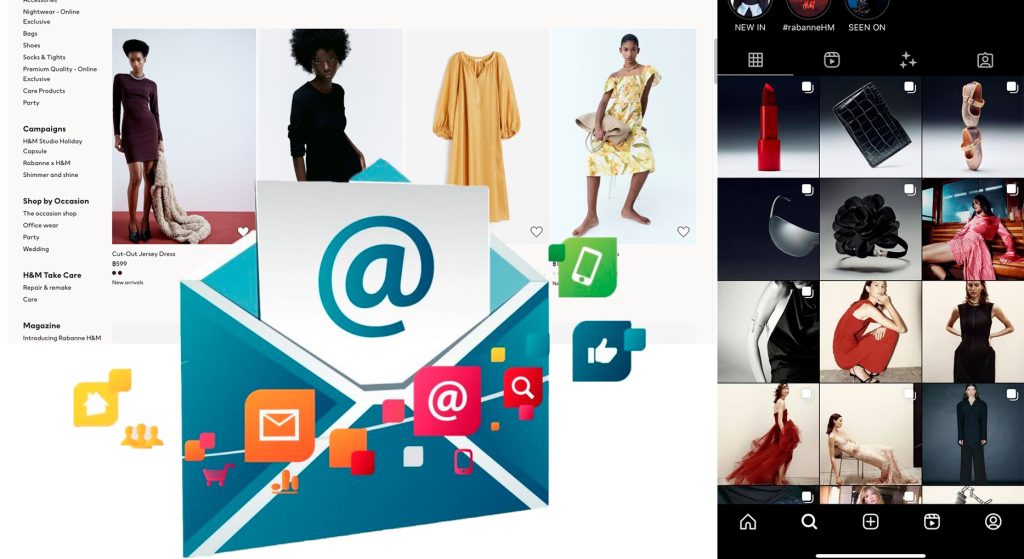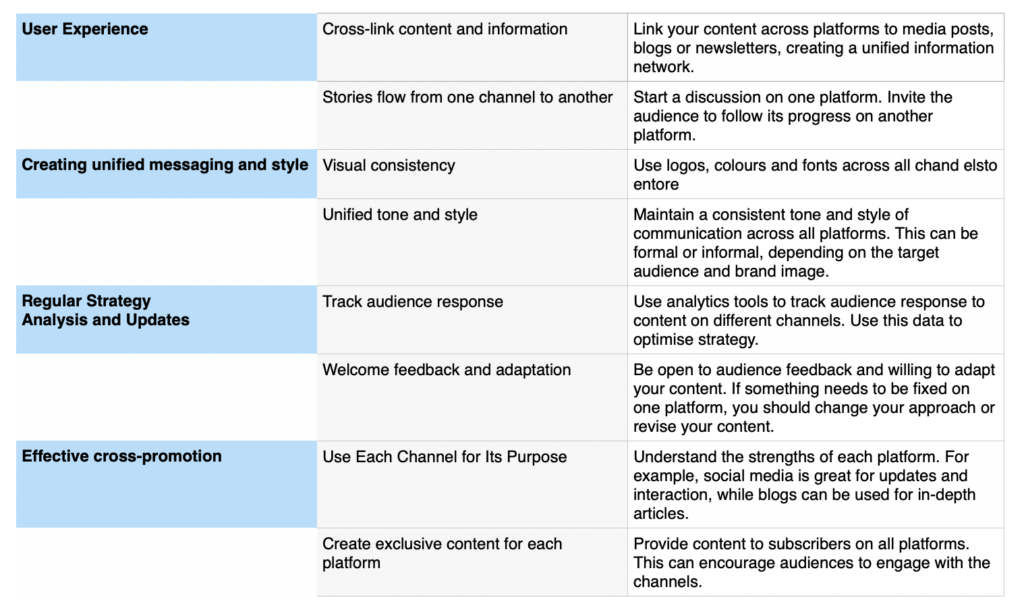How do you effectively manage content when your audience is spread across multiple platforms? How do you ensure your message remains clear and consistent regardless of channel? In today’s environment, the key to success lies in developing a seamless, multichannel content strategy that blends seamlessly across all platforms. In this article, we’ll look at the steps required to create a strategy that ensures audience engagement across any channel. We’ll look at methods for analysing audiences, selecting channels, creating a content plan and maintaining consistent messaging across all platforms.

Audience and channel analysis
Before embarking on a multichannel strategy, you must analyse your target audience and channels. This analysis will help determine how to engage with customers.
- Deep understanding of the target audience
Understanding your target audience is vital to implementing a multichannel strategy. This involves learning about demographics, interests, behavioural patterns and content consumption preferences. With this knowledge, you can create engaging content that resonates with your audience.

- Identify the proper channels
Each channel has its characteristics and requires specific approaches. Determining which channels are most popular with your target audience and how they interact with these platforms is essential.
- Competitor analysis
Research your competitors’ methods and how they interact with their audience. This will allow you to identify gaps in your strategy and find opportunities to make your brand stand out.
- Match content and channels
Once you’ve decided on your channels, you must develop a content strategy tailored to each channel. For example, content for social media should be visually appealing and concise, while email newsletters are better suited for informational purposes.
Writing a content plan for a multichannel approach
After analysing the target audience and identifying the channels, the next step is to create a content plan that includes different types of content for other distribution channels.
- A unified content strategy: The cornerstone of a multichannel strategy is to develop an overall plan that defines the content’s messages, topics, and goals. This strategy should remain adaptable enough to the channels while still making sense.
- Content calendar: Make a calendar that includes publishing schedules for each channel. This will help ensure that content is updated.
- Adapt content for each channel: When creating content, consider the requirements of each channel.
For example, social media platforms are more suited to showcase engaging and dynamic content, while blogs and email newsletters can provide in-depth and informative content.

Examples of integration and consistency in multichannel content
In a marketing landscape where competition for audience attention is ever-increasing, adopting a multichannel approach is becoming increasingly necessary. However, implementing this approach can be a challenge. Here are some real-life examples to demonstrate how to integrate and synchronise content across channels successfully.
Example 1:
Script: A large retail brand utilises social media, its website and email newsletter to promote its clothing collection.
Implementation:
- Social Media: On Instagram and Facebook platforms, the brand posts attractive images of the collection, a description, and links that direct users to its website.
- Website: The brand showcases the collection with descriptions of each item and easy purchase methods.
- Email newsletters: Subscribers receive emails with offers and details about the collection. These emails encourage recipients to visit the brand’s website or its shops.
Summation: The brand provides an enjoyable experience to customers by using channels to capture and retain the audience’s attention.

Example 2: Technology startup
Script: The startup introduces an innovative product and seeks to capture the attention of investors and potential users.
Implementation:
- Social media: Post short videos and posts touting the product’s benefits as well as user testimonials.
- Blog: Publishing articles about the technology behind the product, its application and potential value to users.
- Presentations: Hosting events where attendees can see product demonstrations, ask questions, and get comprehensive information.
Summation: The startup effectively raises awareness about its product by using multiple platforms to educate and engage different audience segments.

Example 3: Local cafe
Script: A local cafe launches a menu in hopes of attracting customers.
Implementation:
- Social media: Showing delicious photos of the food with an invitation to visit the café.
- Email newsletters: Sending out discount coupons or special offers exclusively to subscribers.
- Local events: Participating in festivals and fairs offering samples of their culinary creations.
Summation: Cafes engage customers by offering experiences through various channels, combining an online presence with real-world events.

These examples demonstrate how companies of different sizes and industries successfully adopt a multichannel approach. They explain how a holistic content strategy can help achieve brand goals such as increasing sales, attracting investment, or building awareness.
We hope these examples inspire you to create effective and unified multichannel campaigns that drive growth and success for your business.
Integration and consistency in multichannel content: Practical tips
Creating unified messaging and style
- Visual consistency: Use logos, colours and fonts across all channels to ensure brand recognition.
- Unified tone and style: Maintain a consistent tone and style of communication across all platforms. This can be formal or informal, depending on the target audience and brand image.
User experience
- Cross-link content and information: Link your content across platforms to media posts, blogs or newsletters, creating a unified information network.
- Stories flow from one channel to another: Start a discussion on one platform. Invite the audience to follow its progress on another platform.
Effective cross-promotion
- Use each channel for Its purpose: Understand the strengths of each platform. For example, social media is great for updates and interaction, while blogs can be used for in-depth articles.
- Create exclusive content for each platform: Provide content to subscribers on all platforms. This can encourage audiences to engage with the channels.
Regular strategy analysis and updates
- Track audience response: Use analytics tools to track audience response to content on different channels. Use this data to optimise strategy.
- Welcome feedback and adaptation: Be open to audience feedback and willing to adapt your content. If something needs to be fixed on one platform, you should change your approach or revise your content.

Final thoughts
To conclude this article, the importance of taking a multichannel approach in modern digital marketing. By understanding the target audience, developing a content plan and implementing a strategy, brands can significantly improve engagement with their audience. Real-world examples from various industries show how a multichannel approach can strengthen a company’s market position, increase brand awareness, and drive deeper consumer engagement.
We want to stress that success in multichannel marketing is not only about creativity but also about strategic planning, analysis and adapting to ever-changing market conditions and audience behavior. We strongly encourage marketers, entrepreneurs, and anyone looking to improve their marketing efforts to peruse the ideas presented here and begin developing or refining their multichannel strategy.
